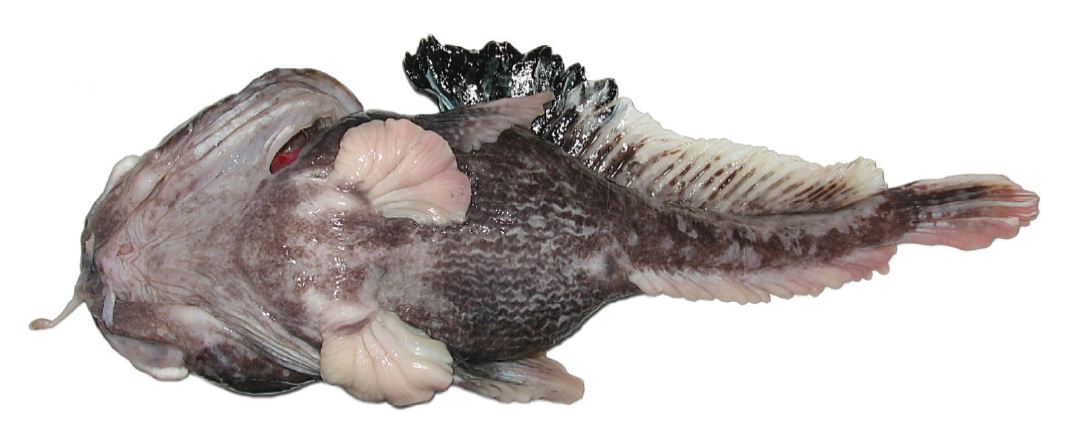
New Deep-Sea Fish Species Found in Antarctica

To catch Antarctic toothfish, you must bait your hook with Peruvian squid and cast it into the depths of the Ross Sea. This is what a team of Ukrainians did on a fishing trip near Antarctica. But sometimes, Mother Nature trips you up. Sometimes, you catch a hopbeard plunderfish.
In 2009-2010, Ukrainian mariners happened to pull up three fish that looked unfamiliar. Further analysis found that they were a previously undiscovered species, dubbed the hopbeard plunderfish and described in a study published online April 29 in the journal ZooKeys. The fish bear the scientific name Pogonophryne neyelovi.
The strange-looking denizens of the deep have brownish-splotched bodies and are shaped somewhat like tadpoles, especially when young, according to the study. They have sharp dorsal fins that extend along the top of their bodies and strange "barbels," which resemble dirty Q-tips, that extend from their chins.
The longest of the three specimens measured 14 inches (35.5 centimeters). And they really like to live in the deep — they were pulled from depths of up to 4,560 feet (1,390 meters).
The fish have large livers, which fill up to 35 percent of their abdomen. Whether or not that means these sea creatures could drink like, well, fish, is unknown.
If you're fond of the hopbeard, just wait until you meet its cousins. The genus Pogonophryne, also known as the short-barbeled plunderfish, has a total of 22 species. These fish also live in the frigid waters surrounding Antarctica. Some of them live in the Ross Sea, like the hopbeard, which is found offshore of Antarctica's Ross Ice Shelf.
Currently, next to nothing is known about their behavior, diet or what they do down there in the depths.
Sign up for the Live Science daily newsletter now
Get the world’s most fascinating discoveries delivered straight to your inbox.

Email Douglas Main or follow him on Twitter or Google+. Follow us @OAPlanet, Facebook or Google+. Original article on LiveScience's OurAmazingPlanet.










